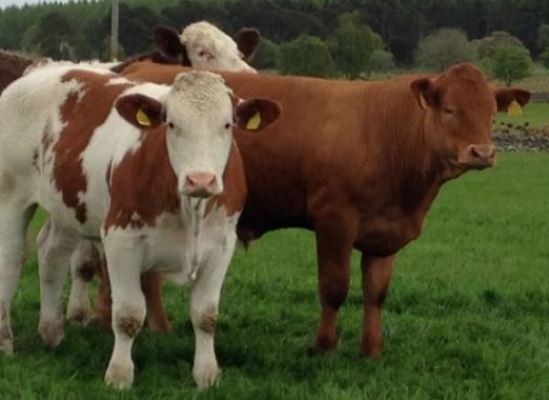Managing Cows to Avoid Grass Staggers
30 March 2020Magnesium Tetany (also known as ‘Grass Staggers’) is caused by a lack of magnesium. Magnesium is not stored in the body and a daily dietary intake is required. Cows in early lactation, older cows and cows under nutritional stress are most at most at risk. There can be various reasons why cows fall dangerously low in magnesium:
- Poor weather conditions can be a stress trigger. Low pasture covers and poorer weather also can mean cows fall dangerously low by not eating enough.
- Lush grass can be low in magnesium and have a high passage rate so less magnesium is absorbed. Magnesium is absorbed in the rumen and it is also thought that high rumen ammonia levels, due to excess protein in lush grass, can also interfere with magnesium absorption.
- High potash levels in grazing grass can antagonise magnesium absorption.
It is likely that a combination of the above reasons will contribute to cases of staggers. A good target is an overall intake of 25g/day of magnesium. Grass can be variable but on average has around 1.6 g magnesium per kilogram of dry matter so if a cow eats 10 kg of dry matter (around 50 kg of grass) this is 16 g of magnesium. This may be adequate under normal conditions but if she eats less or there are factors reducing the absorption of magnesium, it will not be enough and staggers risk is high.
Below is a guide to additional magnesium supplementation to the base ration:
- Hi Mag rolls, normally 1kg supplies a full daily Magnesium requirement (check with supplier) these are easy fed on the ground. 1 kg will also supply around 10 MJ of energy which is important when grass supplies are short.
- Mineralising your own cereals, cheaper but need to account for wastage and loss of mineral on the ground especially in wet conditions – at least 100 g/head of a 25% magnesium mineral required to be mixed in.
- Liquid molasses fortified with magnesium in roller ball feeders – harder to regulate intakes
- Hi Mag buckets or free access mineral – aim around 20% mag in buckets and 25% mag for powdered minerals. Downside is you are relying on all cows taking the mineral – ensure good access to minerals/enough buckets are put out for the number of cows.
- Treating water supply – not as effective at grass, takes managing, shouldn’t be relied on.
Nutritional and stress management as an aid to mitigating the risk of grass staggers:
- Ensure that cows are eating enough so they are not in negative energy balance and hence low magnesium and under additional metabolic stress.
- If grass is below 6 cm cows must be supplemented for energy as well as for magnesium. If using silage as a supplement then minerals can be sprinkled on the top of the bale.
- Avoid periods where intakes may be lower than required then suddenly change, for example rotational grazing taking residuals too low to meet nutritional needs then moving to a lush paddock or overnight with no feed then a move in the morning.
- Observe cow behaviour and spot the risk factors. For example, cows standing around the gate or sheltering from weather for long periods without eating. Look at the amount of grass available and if they are going to realistically meet their daily requirements from this grass.
- Always consider the risk of magnesium shortage by checking the base ration the cows are on and what is being supplied by additional supplements.
- Leave application of potassium fertilisers until later in the season.
Karen Stewart, karen.stewart@sac.co.uk
Sign up to the FAS newsletter
Receive updates on news, events and publications from Scotland’s Farm Advisory Service

